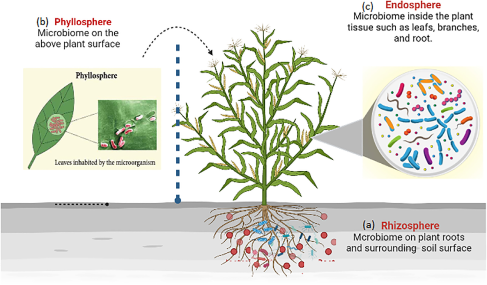“The Plant Health Pyramid is an approach model developed by John Kempf that encourages plant health and resilience against pests and diseases through four distinct levels. Nutrition and soil biology is essential for a plant’s progression through each level is a progression in terms of a plant’s physiological capabilities.”
Level 1: Complete Photosynthesis
Plants have complete photosynthesis where plants convert light energy, carbon dioxide and water into chemical energy, glucose and oxygen. At this simple stage plants sequestrate carbon, produce oxygen and gains an energy source in the form of glucose. These plants resist soil-borne fungal pathogens such as verticillium and fusarium. Magnesium, Iron, Manganese, Nitrogen, Phosphorus are required for the plant to successfully obtain level one, as they aid in the photosynthetic reactions.
This stage to the general public has deemed to normal, but is actually only 25% of what plants are capable of. It becomes evident when a plant has photosynthesised completely when the quantity of the sugars they make increase by sometimes 3 to 4 fold, which becomes apparent from the Brix score (using a refractometer) or in a lab. Other than this these plants are able to convert more simple sugars into complex sugars (carbohydrates), hence having higher quality sugars. Most plants typically operate at only 15-20% of this potential. This level is the foundation for all subsequent levels of plant health.

Level 2: Complete Protein Synthesis
The second level focuses on complete protein synthesis, whereby plants convert all the absorbed nitrogen into complete proteins. This in turn minimizes the available nitrogen that pests can consume. Larval/sucking insects with simple digestive systems like tomato hornworms, aphids and white flies are then unable to digest these complete problems and hence is no longer a food source to them. The minerals Magnesium, sulphur, Molybdenum, Boron are needed. This process can be validated by plant sap analysis: nitrate and ammonium levels will appear as 0 on the sap test, but the plant will have abundant levels of total N.
These two initial levels involve the plant’s passive immunity and is obtained by having the necessary amounts of the essential minerals. Whereas levels 3 and 4 depend on the soil biology, and need the help of microbes, which puts farmers responsible to aiding the right environment for the plants and microbes to thrive in.
Level 3: Lipid Synthesis and Disease Resistance
In Level 3, plants begin to produce a surplus of energy, which they store as lipids (fats- like humans! nd oils). This increase in lipid synthesis— by two to four times—provides a glossy/waxy outer layer to leaves. This physical impenetrable layer protects the plants from airborne pathogens, such as mildew and blight, which tries to penetrate the plant during contact with its leaves. Achieving this level requires an extensive microbiome in the rhizosphere that supplies complex nutrients, which allows the plant to absorb the nutrients, and in turn save that energy that would have been spent on nutrient conversion.
Level 4: Elevated Secondary Metabolites
In the final stage, plants produce elevated levels of plant secondary metabolites (PSMs) that function as natural protectant compounds that have antiviral, antifungal, and antibacterial properties. Examples of these are flavonoids and terpenoids which are used as nutraceuticals for humans. These PSMs protect the plant from insects, diseases and UV light and are energy-intensive so the plant needs to have surpassed level 3 of the pyramid to have enough energy to making these compounds that the normal amount. The right microbes in the phyllosphere and rhizosphere will trigger the plant’s immune response; Systemic Acquired Resistance (SAR) and Induced Systemic Resistance (ISR) – stimulating the plant to create PSM in higher amounts. These compounds not only deter pests such as beetles and nematodes but also enhance the overall nutritional quality of crops.

This Plant Health Pyramid illustrates the importance of having a holistic management approach that integrates nutrition and soil health. This highlights the importance of the symbiotic relationship between the soil microbes and plant roots and their rhizosphere interactions. By progressing through these levels, growers can cultivate plants that are not only healthier but also more resilient against various threats in their environment
Resources:
https://advancingecoag.com/plant-health-pyramid/
https://www.sciencedirect.com/science/article/pii/S2667064X23001525
https://www.youtube.com/watch?v=Oqsie53g3xQ
